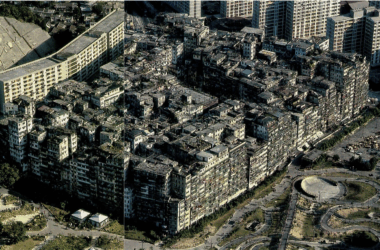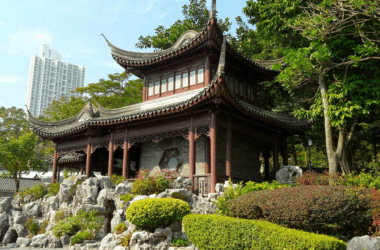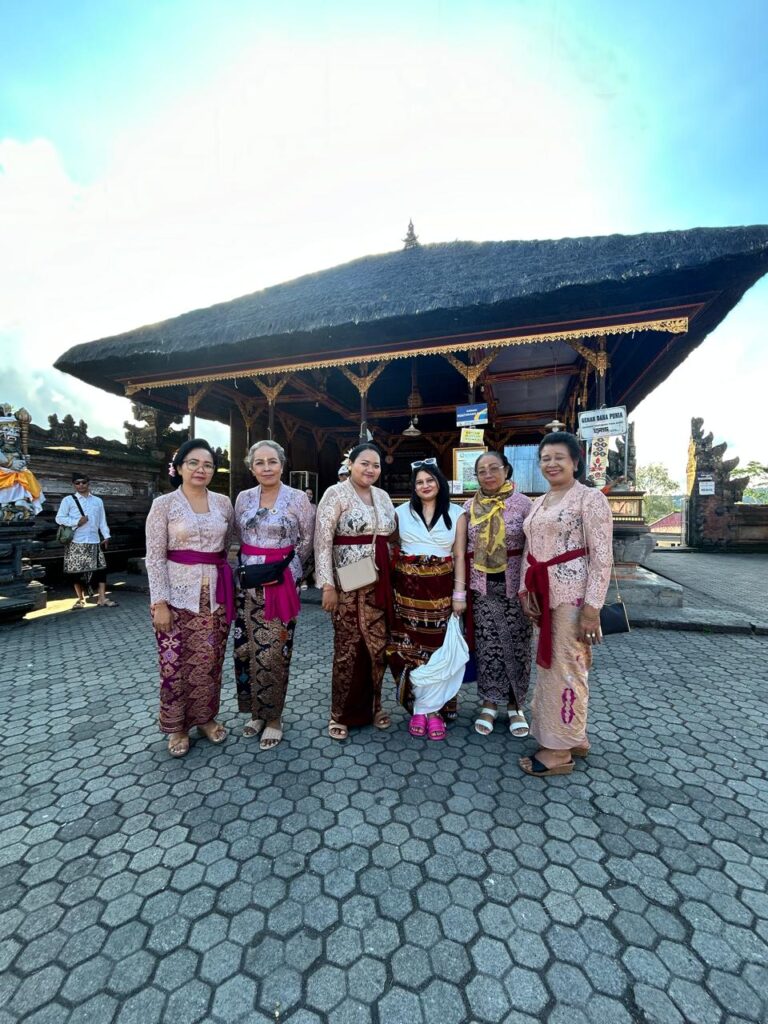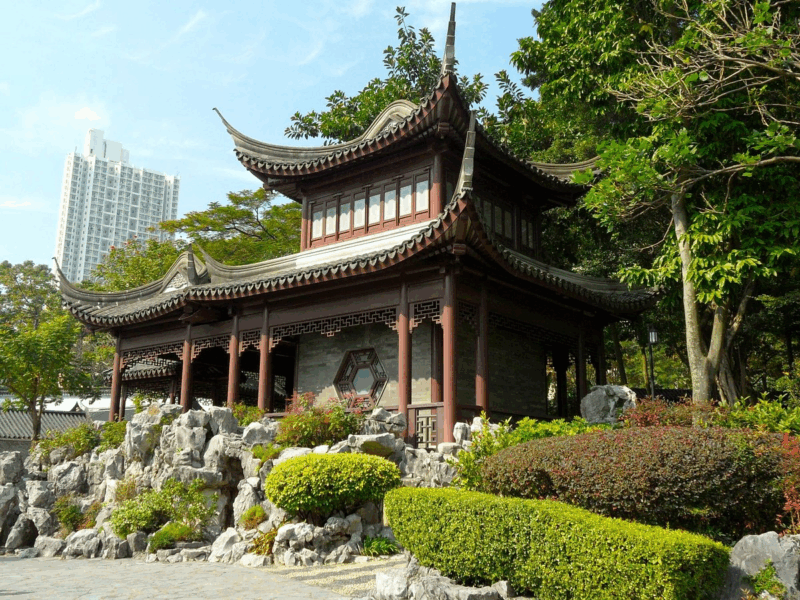In the heart of one of the world’s most modern cities lies a forgotten fragment of history—one paved in shadows, stories, and survival. Walled Street, as it’s sometimes referred to, is more than a geographic location. It is the last echo of an empire of disorder, of resilience, and of an era that Hong Kong buried, but never truly forgot.
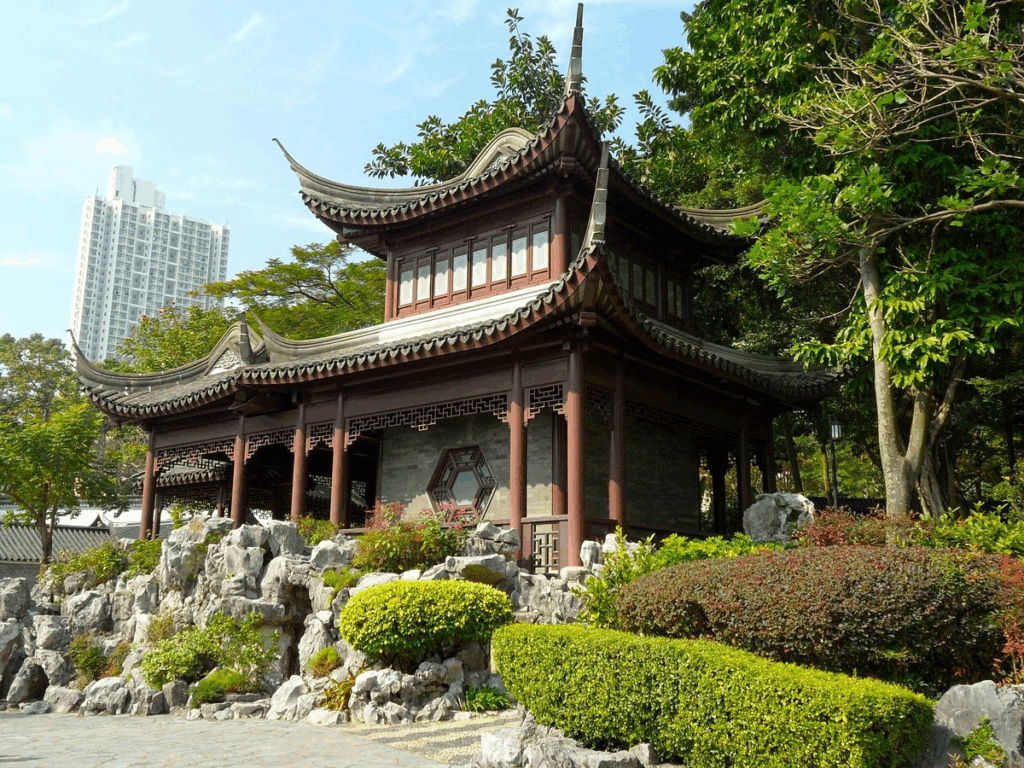
Roots in the Ruins – The Kowloon Walled City
To understand Walled Street, you must start with the Kowloon Walled City, a place that defied every notion of what a city should be.
Originally built as a Chinese military outpost during the Qing Dynasty, it became an odd legal no-man’s-land after the British took control of Hong Kong in the 1800s. Following the Japanese occupation during World War II, squatters flooded into the area. By the 1950s, the Walled City had transformed into one of the most densely populated and unregulated urban spaces on Earth.
No taxes. No police. No zoning. No rules.
Buildings were constructed haphazardly, stacked on top of each other like Lego bricks. Staircases led to nowhere. Corridors vanished into pitch black. It was a city that grew vertically and chaotically, forming a kind of organic architecture shaped by necessity, not design.
And nestled on the edge of this anarchic maze was the stretch that would come to be known as Walled Street.
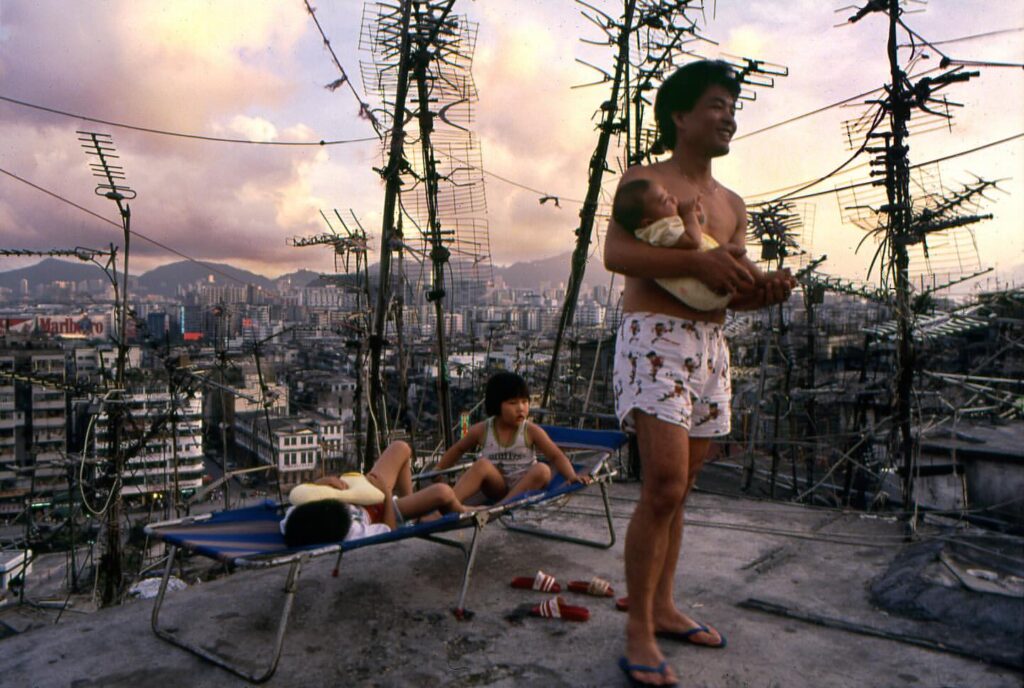
Check More: Kowloon Walled City scenes, 1987-1990.
The Rise of the Underworld
While the rest of Hong Kong modernized, Kowloon Walled City—and Walled Street with it—operated under a different system entirely. In the vacuum of official oversight, the Triads—organized crime syndicates with deep roots in Hong Kong—moved in.
The 14K and Sun Yee On gangs effectively became the law. They ran unlicensed businesses, operated illegal gambling dens, heroin kitchens, and prostitution rings. In Walled Street, there were no public records. No background checks. No building codes. Everything and everyone moved in secrecy, behind layers of makeshift doors and whispered names.
Dentists pulled teeth without licenses. Teachers taught children in windowless classrooms. Families lived in units so cramped that kitchens doubled as bathrooms. And yet, it functioned. A kind of unspoken order amidst the chaos.
Residents say the Triads imposed a system. Steal from a neighbor, and you’d lose a finger. Refuse to pay rent, and you’d disappear. The police, when they did venture in, often did so in groups of dozens—and even then, only in daylight.
READ ALSO: My Best Trip to Kamrunag Temple & Kamrunag Lake!
Lives in the Shadows
But Walled Street wasn’t just crime and decay. It was also home. For the nearly 30,000 residents of the Walled City, many of whom lived along or near Walled Street, it was where they raised families, opened noodle stalls, and dreamed of something better.
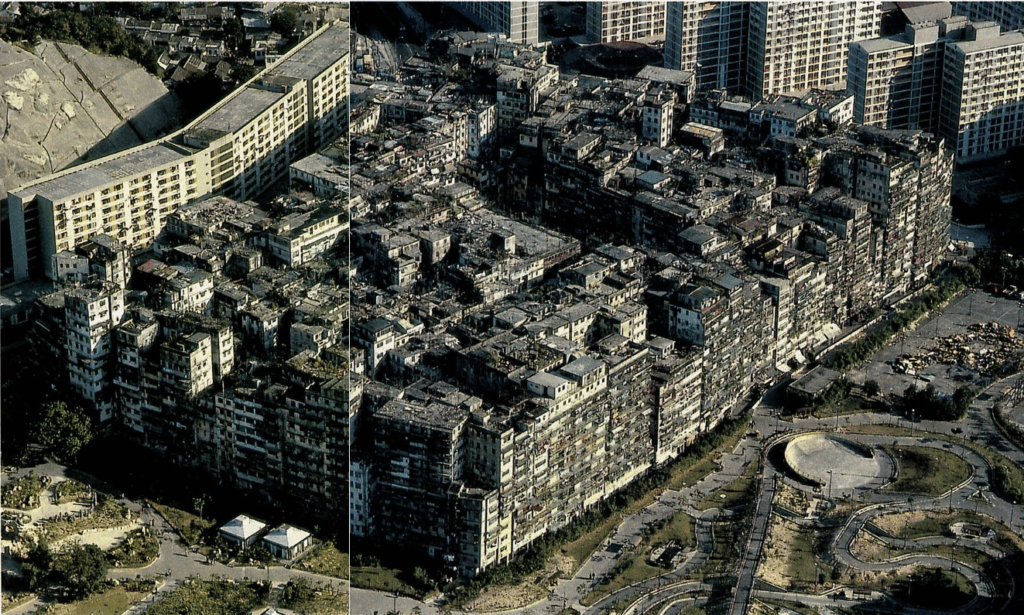
People made do with what they had. Water was piped illegally through a tangled mess of hoses and tubes. Electricity was stolen from the grid. Inside the walls, there were barbershops, temples, convenience stores, and even doctors—some of them self-taught, others fallen from grace.
The noise was constant. So was the darkness. Most buildings had no windows. Fluorescent lights flickered 24/7. From above, it looked like a monolith of rusted metal and mildew-stained concrete.
But to those who lived there, it was home. And to outsiders, it became legend.


Before & After Picture of Kowloon Walled City
READ MORE ABOUT: History of Kowloon Walled City of Hongkong
The Government Responds
By the late 1980s, Hong Kong was preparing for its handover to China, and its image on the global stage mattered more than ever. The government could no longer ignore the embarrassment of the Walled City. What had once been tolerated as a necessary evil was now seen as an international eyesore.
In 1993, the government began its final campaign: clearance and demolition.
Over 350 businesses were closed. Residents were offered compensation—though many argued it was too little. Bulldozers came. Walls came down. The skyline shifted.
Walled Street, by this time, had become a fading artery of the Walled City, still populated but no longer entirely lawless. As demolition pushed forward, Walled Street was caught in the slow wave of erasure.
By 1994, the Walled City was gone.
Rebirth – Kowloon Walled City Park
In its place, something unexpected bloomed.
Today, if you visit the site where the Walled City once stood, you’ll find a beautifully maintained space called the Kowloon Walled City Park. It’s tranquil. Serene. Filled with bonsai trees, koi ponds, stone bridges, and reconstructed remnants of the Qing-era military fort.
Where once the air was thick with smog and secrets, now there’s birdsong and laughter.
A few artifacts remain—sections of the original wall, a restored South Gate, and stone plaques—but most of the madness has been replaced by order. The park is a deliberate kind of forgetting, a peaceful green cover placed over decades of barely-contained chaos.
And yet… the story hasn’t been completely erased.
What Remains – Walled Street Today
Walled Street itself—now reduced to a few side alleys near the park—still carries traces of the past. Some aging tenement buildings remain, weathered and dark. The graffiti changes, but the walls remember. Locals speak of odd figures wandering the area at night. Old timers still avoid certain corners.
While most of the illegal businesses are long gone, the myth persists. Urban explorers and filmmakers return time and again, searching for what the park tries so hard to hide.
There’s a particular stretch of alley where the buildings still feel close—claustrophobic. It smells damp. You can’t hear the city anymore. In those moments, it’s as if you’re back there—when the rules were different and danger breathed from every shadow.
Kowloon Walled City Map Below
Epilogue: Memory and Myth
Walled Street, like the Kowloon Walled City it once served, is more than a place. It is a memory. A warning. A marvel.
It shows us what humans are capable of when left unchecked, but also how they adapt, survive, and build entire worlds out of nothing.
Today, as families picnic in the park and children play where Triads once ruled, the story of Walled Street lingers like a whisper in the breeze. Forgotten by some. Preserved by others.
But always, always waiting to be remembered.
READ ALSO: World Forest Day Incredible Facts You Have To Know.




